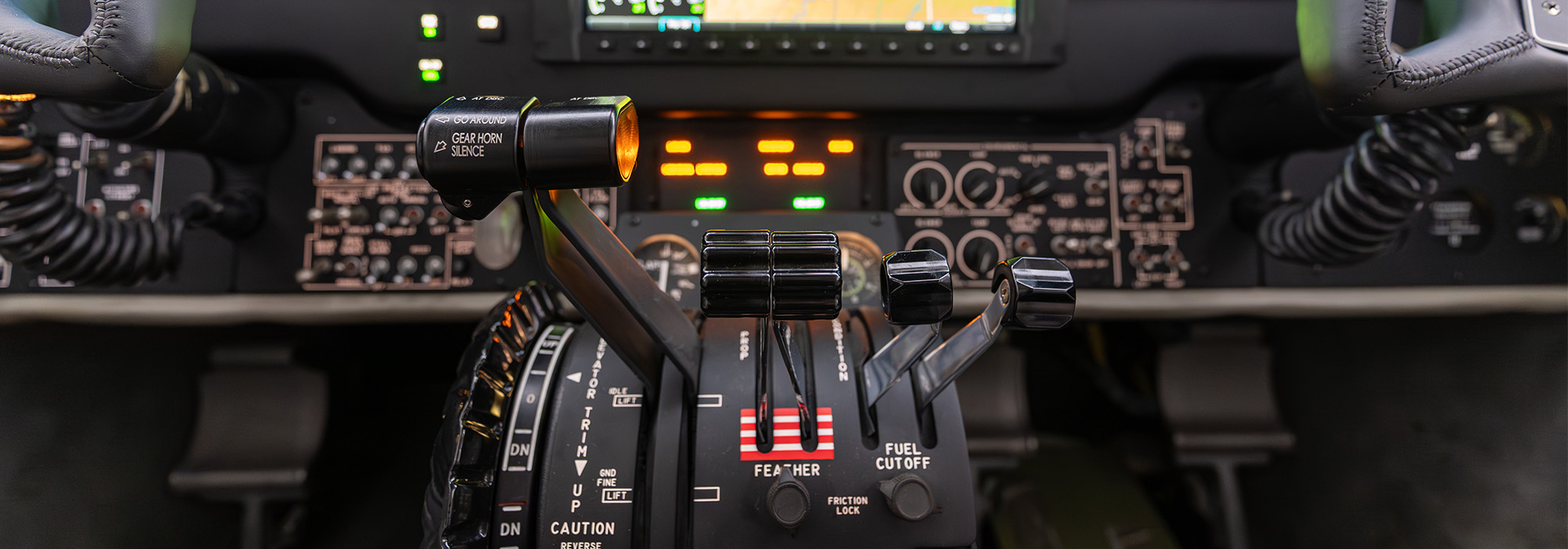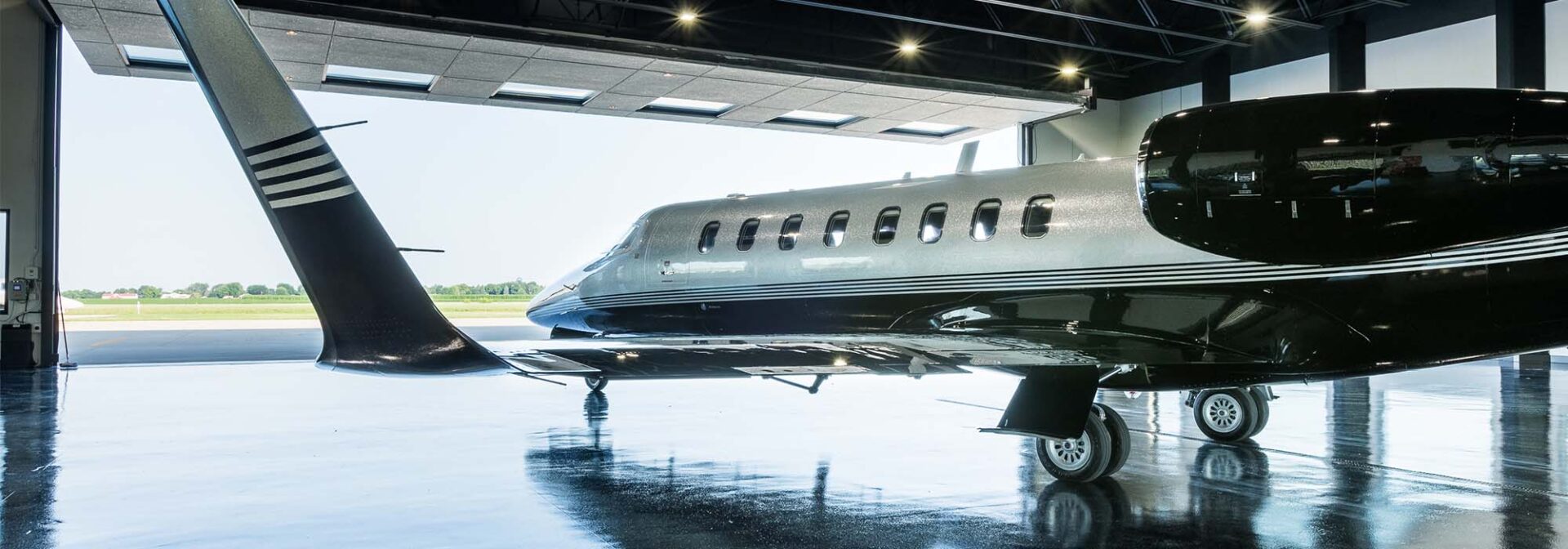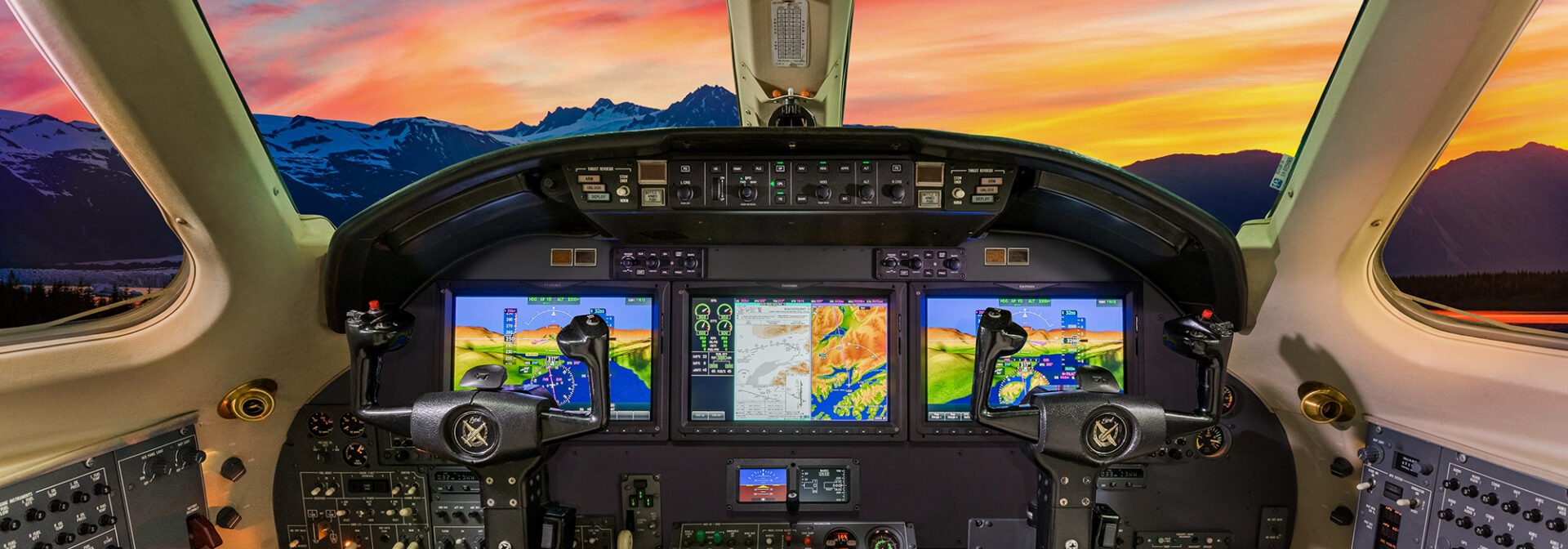By Bill Forbes – Senior Vice President of Avionics and Business Development
In aviation, few technological upgrades offer a combination of efficiency, safety, and confidence the way Garmin’s Autothrottle does. For decades, turboprop pilots have relied on their judgment, reflexes, and constant vigilance to manage power settings. The arrival of Autothrottle, integrated seamlessly into the Garmin G1000 NXi flight deck, is changing that equation. Already approved for the King Air 200 series and certain King Air 300 series, this system represents a new chapter in automation for Beechcraft’s iconic turboprop line.
At its core, Autothrottle manages engine thrust with precision, responding to changes in flight conditions and pilot selections to maintain optimal power settings. What makes this innovation so important is not just the convenience of automated throttle control. It is the way the system strengthens safety margins, streamlines pilot workload, and protects the engines from costly exceedances. When paired with the broader Garmin Autonomi ecosystem, including Autoland and Electronic Stability and Protection (ESP – which is included with autothrottle), Autothrottle is far more than a luxury. It is a transformational capability for owner-operators, corporate flight departments, and charter providers alike.
The Evolution of the G1000 NXi in King Airs
To fully appreciate the leap Autothrottle represents, it helps to understand the G1000’s evolution in the King Air family. Garmin’s G1000 suite has been the gold standard in general aviation avionics since its introduction nearly twenty years ago. When the NXi variant arrived, it brought faster processors, brighter displays, advanced graphics, wireless connectivity, and a more intuitive interface.
That modernized flight deck laid the foundation for a new era of automation. The G1000 NXi already provides synthetic vision, integrated autopilot control, SafeTaxi, terrain awareness, and connected flight planning through Garmin Pilot. With Autothrottle now added to the system architecture, the King Air’s avionics suite rivals the level of automation once reserved for large business jets.
How Autothrottle Works

Autothrottle interfaces directly with the G1000 NXi and the King Air’s engines to adjust power levers electronically. Once engaged, it continuously manages power to achieve target airspeeds, climb rates, or descent profiles in takeoff, cruise, or approach. The system references aircraft performance tables, pilot-selected parameters, and real-time engine data to maintain the most efficient and safe throttle positions.
During takeoff, Autothrottle applies the exact torque required for a maximum performance climb, avoiding the risk of over-torquing the engines while ensuring a strong, predictable acceleration. In cruise, it maintains optimal power to hold speed and fuel efficiency. During descent and approach, it adjusts the throttles to keep the aircraft on speed, preventing the airspeed fluctuations common when pilots are distracted by ATC calls or weather deviations.
Importantly, the Autothrottle system is designed to respect engine limitations. It automatically prevents exceedances by reducing power before ITT or torque limits are reached. If overspeed conditions arise, it retards the throttles. If underspeed conditions develop in turbulence, steep climbs, or icing, the system advances power to recover.
The most striking demonstration of its capabilities comes during an engine-out scenario. Should one PT6A engine fail, the Autothrottle freezes the failed engine’s lever and immediately optimizes the operating engine for OEI flight. When paired with the G1000 NXi Electronic Stability and Protection (OEI-ESP), which is included in the Autothrottle system, the aircraft remains balanced and controllable even during high-stress emergencies. This level of automation is not merely convenient; it can be life-saving.
Safety First: Exceedance Protection and Engine Preservation
Engine exceedances are among the most costly and dangerous errors in turbine aircraft. A brief over-torque or over-temp can lead to unscheduled inspections, expensive repairs, or even in-flight emergencies. Pilots are trained rigorously to avoid them, yet in a high-workload cockpit environment, mistakes happen.
Autothrottle eliminates much of this risk. By constantly monitoring engine parameters, it ensures the power levers never stray into dangerous territory. If ITT begins to rise toward its red line during a hot climb, Autothrottle will pull back power smoothly. If turbulence causes a speed increase near the velocity maximum operating (VMO), Autothrottle retards the throttles before structural limits are threatened. In descent, it prevents airspeed decay that could lead to stick shaker or stall.
This protective envelope acts faster than human reflexes and never tires. Over the long run, it preserves engine health, minimizes unscheduled maintenance, and reduces operating costs. These factors directly influence the financial bottom line for King Air operators.
Workload Reduction and Pilot Focus

While safety is paramount, Autothrottle’s impact on pilot workload cannot be overstated. Managing power in a twin turboprop is a constant task. Every phase of flight requires small adjustments that counter density altitude, turbulence, or weight changes to keep the aircraft flying efficiently. This is especially demanding in busy airspace or single-pilot IFR operations, where the pilot’s attention is already stretched between navigation, radio calls, weather, and traffic avoidance.
With Autothrottle engaged, these power adjustments happen automatically. Pilots can reallocate their mental bandwidth toward higher-level decision making. Instead of “chasing needles” on airspeed or torque gauges, they monitor the system, ensuring it is meeting objectives while focusing on broader situational awareness.
For flight departments, this translates into greater safety margins in high workload conditions. For single-pilot operators, it offers peace of mind knowing that a digital copilot is managing one of the most demanding tasks in the cockpit.
Emergency Scenarios: Engine-Out and Autoland
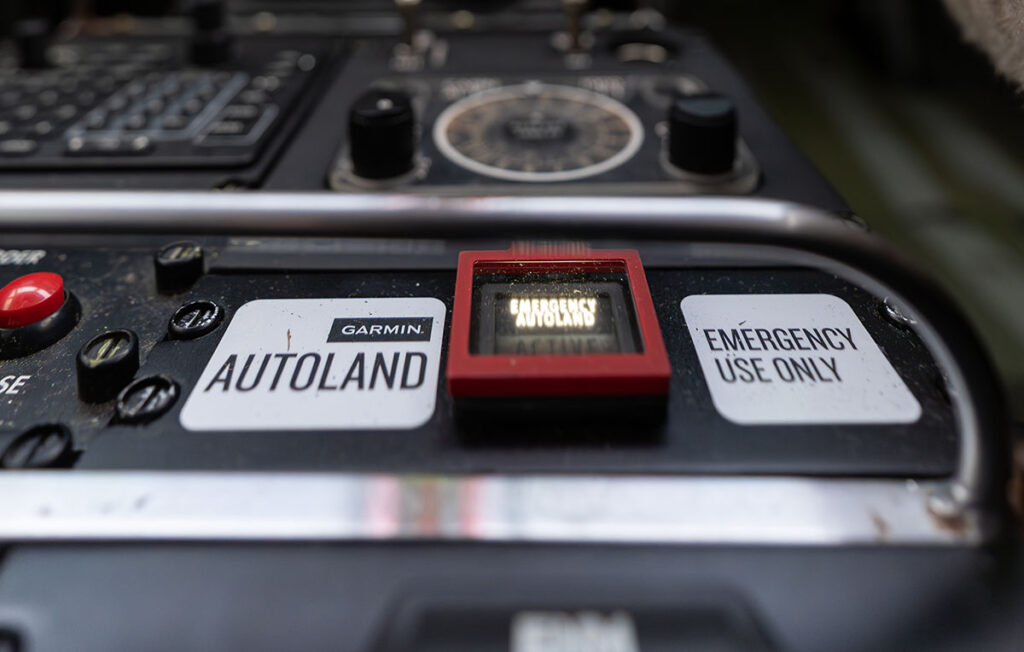
Perhaps the most compelling case for Autothrottle is its behavior during emergencies. In a one-engine inoperative scenario, Autothrottle instantly balances thrust, preserving directional control and maintaining the target speed for safe flight. Without automation, this is one of the most stressful moments in turboprop operations, one that demands precise throttle adjustments while simultaneously flying the airplane.
Coupled with Garmin’s Autoland, Autothrottle completes the automation chain from power management to full flight control. If Autoland is activated by the pilot or automatically due to pilot incapacitation, Autothrottle manages thrust from descent to flare, landing roll, braking, and even engine shutdown. For passengers, this capability provides a level of reassurance once unimaginable in general aviation.
Integration with Garmin’s Autonomi Suite
Autothrottle is not a standalone feature. It is part of Garmin’s broader Autonomi ecosystem. Alongside ESP, Autoland, and Emergency Descent Mode, it delivers layered protections designed to backstop pilot performance.
ESP prevents unusual attitudes by nudging the controls back within safe flight envelopes. Emergency Descent Mode takes over in case of cabin depressurization, guiding the aircraft to a breathable altitude. PlaneSync adds connectivity, enabling remote diagnostics and software updates. Autothrottle ties seamlessly into each of these, ensuring that power management never lags behind the system’s other automated responses.
The result is a flight deck that behaves intelligently in both normal and abnormal conditions. Rather than isolated systems, Autonomi technologies work in concert, creating redundancy, consistency, and predictability for pilots and passengers.
Training and Operational Implications
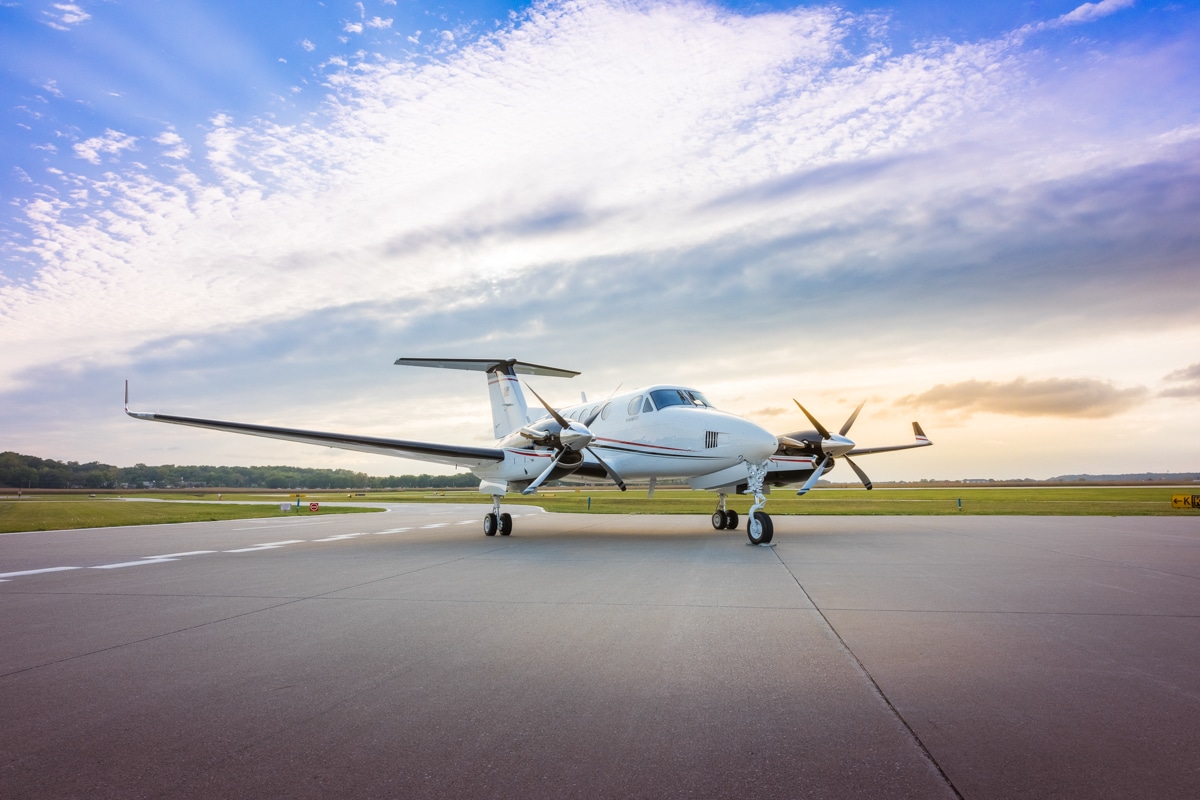
Adding Autothrottle to the King Air is not simply a hardware upgrade. It changes how pilots are trained and how operators run missions. Training programs must now incorporate Autothrottle-specific procedures: engaging and disengaging the system, recognizing failures, and reverting to manual control. Crews must understand how Autothrottle interacts with autopilot modes, especially during coupled approaches or go-arounds.
For operators, the system shifts the balance of cockpit workload. Standard operating procedures may evolve to reflect reduced power management demands and increased system monitoring. In recurrent training, simulators will be updated to demonstrate Autothrottle’s protective features and its responses in engine-out situations.
There is also a cultural adjustment. Some pilots worry that increased automation may erode manual flying skills. However, the prevailing view is that Autothrottle should be seen as a safeguard, not a crutch. Pilots remain responsible for understanding the fundamentals of power management, while the system reduces the risk of error.
Market Value and Business Case
From a financial perspective, Autothrottle represents both an investment in safety and an enhancement to aircraft value. Aircraft equipped with Autothrottle and Autoland are more attractive on the resale market, particularly to operators who prioritize crew safety and modern avionics. Insurance underwriters are also taking notice, with the potential for premium benefits tied to reduced accident risk.
Installation costs vary, depending on the equipment level in the G1000 NXi system. For many operators, the expense is offset by reduced maintenance from fewer exceedances, increased crew efficiency, and stronger asset value at resale.
Looking Ahead: The Future of Automation in Turboprops
Autothrottle’s approval for the King Air 200 series and pending availability for the 300 series mark only the beginning. As Garmin refines its algorithms and integrates with future G1000 NXi upgrades, we can expect even more sophisticated behaviors. Adaptive climb and descent profiles, predictive turbulence response, and tighter coupling with weather avoidance systems are likely in the pipeline.
The broader trend in general aviation is unmistakable. Automation is cascading downward from large jets to turboprops, light jets, and even piston singles. King Air operators are positioned at the forefront of this shift, benefiting from technologies that were once unimaginable outside airline or heavy business jet cockpits.
Wrapping Up
Garmin’s Autothrottle for the G1000 NXi represents one of the most meaningful avionics upgrades available to King Air operators today. By managing power with precision, preventing costly exceedances, smoothing workload, and supporting emergency scenarios, it delivers benefits that extend far beyond convenience. It preserves engines, enhances safety, improves pilot focus, and increases the overall value of the aircraft.
With approvals already in place for the King Air 200 series and the 300 series soon to follow, Autothrottle is poised to become the new standard in turboprop operations. For pilots accustomed to constant throttle management, the difference is transformative. For passengers, the result is smoother and safer flights. For operators, it represents a forward-looking investment in technology that defines the next generation of aviation.
About the Author:
Bill Forbes is the Senior Vice President of Avionics Programs and Business Development for Elliott Aviation. Bill has been with Elliott since 2018. He started his career in aviation as a crew chief in the Air Force in 1985. He has been associated with Beechcraft Aircraft and Service Centers since 1996. He has been involved in avionics sales and management since 2003 and has been involved in several STC projects with Collins, Honeywell, and Garmin before joining Elliott Aviation. You can reach him at bforbes@elliottaviation.com.
